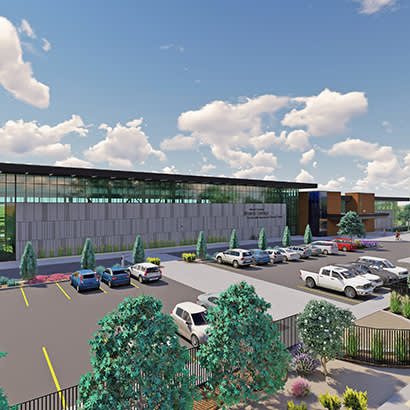
For an enhanced digital experience, read this story in the ezine.
As the spring months approach, Congress is set to kick off its consideration of government spending levels — or appropriations — for federal fiscal year 2025 (FY25). Congressional earmarks are an important piece of these spending bills through which park and recreation agencies can achieve significant federal-funding wins.
Recent Wins in Reno
Recently identified as one of the top 10 best places to live by U.S. News and World Report, Reno is known for its year-round outdoor recreation opportunities. The Reno City Council has identified parks and recreation as a priority to improve the quality of life for residents and visitors.
In FY22 and FY23, Reno’s congressional delegation — aided by the leadership of Senator Catherine Cortez Masto, Senator Jacky Rosen and Congressman Mark Amodei — supported several of the city’s requests to further this goal:
- ADA restroom upgrades – Secured $1.056 million for restroom facilities upgrades at four park locations, improving quality and year-round access, while also ensuring ADA compliance.
- Rooftop solar addition – Secured $800,000 for the addition of rooftop solar panels to the new Moana Springs Community Aquatics and Fitness Center.
Navigating the Process
The time is now to begin planning for and engaging with this process. Federal lawmakers will begin accepting constituent earmark requests in March and April, and the steps summarized below will help you effectively engage and improve the likelihood of winning project funds.
Project Selection
The first step is selecting the project — or perhaps a menu of a few potential projects — that you will propose to your lawmakers. It is key that you consider the following variables when identifying projects:
- Select projects that are shovel ready. Projects must be able to be reasonably initiated and completed within about one calendar year of receiving funds.
- Select projects that are within a sensible budget range. There is no hard cap on the size of an individual earmark, but projects have the best chance of success if they fall between a couple hundred thousand to a few million dollars. Remember, the average size is about $2 million. Projects that already have funds but need a little extra to get them across the finish line are great places to look as these show a commitment at the local level.
- Select projects that are not political landmines for your lawmakers. Understand the values and viewpoints of the lawmaker with whom you are working. These projects must not only earn the support of your lawmaker, but also will be approved by the entire Congress and covered in the local press once the project gets underway.
In project selection, communicate with your jurisdiction’s appropriate executive and budget staff to make sure your request has their sign-off, if needed. Coordinate with other departments in your jurisdiction as well to make sure you have a united front as one agency, rather than making competing requests.
Lawmaker Engagement and Application
Connecting with your lawmakers outside the earmark process is an important step in building ongoing and lasting relationships that will aid you when your application is under review. Coordinate with your jurisdiction’s government affairs team members, if possible, who work with the federal delegation on a regular basis and provide a tour so your lawmaker is aware of the situation you are trying to solve for your shared constituency.
Once you have identified projects that you would like to submit, contact your representative and senators’ staff to familiarize them with your proposal and gather any feedback they may have ahead of formal submission. NRPA recommends taking the following steps:
- Call the main office phone number of the representative(s) and senators for the community your project will benefit.
- Tell the person who answers that you are interested in sending in an earmark request for a park project in FY25 appropriations.
- Ask if the office will be accepting earmark requests and how to access the office’s application.
- Ask for the name of the staff member who will be working on this kind of earmark request and get their contact information so you can schedule a preliminary meeting about your topic. Ideally, this meeting will take place before you submit your request form so that when they receive the form, they are already familiar with the value your project will bring to the community.
Also, coordinate with as many local stakeholders as possible to demonstrate the broad base of constituents supporting your project. Letters from mayors/county executives, community groups and others alongside your application can go a long way.
Once you receive an earmark award, publicly acknowledge the support of your federal lawmakers. Host an event and highlight what the collaboration brought to fruition.
Calli Wilsey is the Director of Policy and Strategy for the City of Reno, Nevada.


